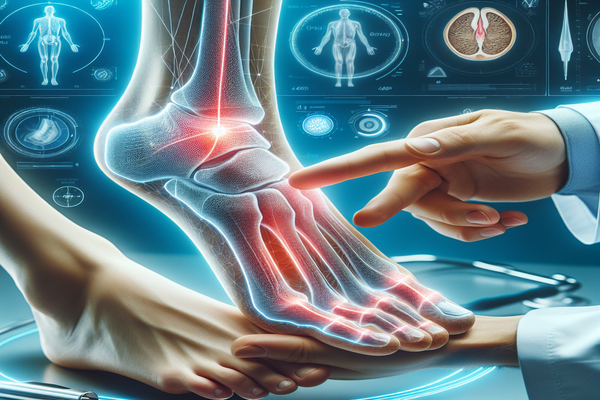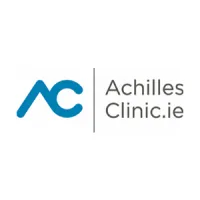
We have all been there, neglected a niggle in our foot and told ourselves that it would probably go away. Weeks have passed, even months, and it’s only getting worse. Then finally, when we are hobbling around barely able to walk, we decide to seek help…
Well, at Achilles Foot Clinic, we are here to help you.

Bunions 101: Causes, Symptoms, and Treatment Options
Understanding Bunions
Bunions, also known as hallux valgus, are a common foot deformity characterized by a bony bump at the base of the big toe. At Achilles Podiatry Clinic in Ballincollig, Cork, we aim to provide comprehensive guidance on bunions to help patients better understand this condition and explore their treatment options.
What Causes Bunions?
Bunions develop due to a combination of genetic, anatomical, and environmental factors. Here are some primary causes:
Genetics: A family history of bunions significantly increases your risk. Certain foot shapes, such as flat feet or overly flexible ligaments, can also contribute.
Improper Footwear: Wearing tight, narrow shoes with high heels can exacerbate the formation of bunions. Footwear that lacks adequate support may lead to misalignment of the toes.
Arthritis: Inflammatory conditions like rheumatoid arthritis can damage the foot's joints, leading to bunion formation.
Overused Foot Mechanics: Repetitive stress from certain activities, especially those involving significant walking or standing, may accelerate bunion development.
What Are the Symptoms of Bunions?
Recognizing the symptoms of bunions is essential for early intervention. Common symptoms include:
Visible Bump: A noticeable protrusion on the side of the big toe.
Pain and Discomfort: Inflammation, tenderness, and pain in and around the big toe joint, which may worsen with activity.
Swelling and Redness: The area around the bunion can become swollen and inflamed, sometimes accompanied by redness.
Restricted Movement: Difficulty moving the big toe due to pain or joint stiffness.
How Can I Treat Bunions?
Treatment options for bunions can generally be categorized into non-surgical and surgical methods:
Non-Surgical Treatments
Footwear Modifications: Wearing shoes with a wide toe box, low heels, and adequate arch support can alleviate pressure on the bunion.
Padding and Orthotics: Custom orthotic devices and cushioned pads help distribute pressure evenly and create more comfort.
Ice Therapy: Applying ice packs to the affected area can reduce swelling and relieve pain.
Medications: Over-the-counter anti-inflammatory medications, like ibuprofen, can manage pain and inflammation.
Surgical Options
If conservative treatments fail to provide relief and the bunion is causing significant pain or functional issues, surgery may be necessary. Common surgical procedures include:
Osteotomy: This surgery involves cutting and realigning the bone to correct the toe's position.
Exostectomy: Removal of the bony bump on the toe joint while realigning the toe.
Arthrodesis: Fusion of the bones in the big toe joint for severe cases with significant joint damage.
When Should You See a Podiatrist?
If you are experiencing symptoms of bunions that interfere with daily activities or cause significant pain, it is advisable to seek professional advice. The team at Achilles Podiatry Clinic in Ballincollig, Cork can evaluate the severity of your condition and offer personalized treatment options suited to your needs.
FAQ about Bunions
1. Are bunions hereditary?
Yes, bunions can be hereditary. A family history of bunions increases the likelihood of developing this condition due to genetic factors and shared foot anatomy.
2. Can bunions be prevented?
While it may not be possible to completely prevent bunions, wearing well-fitting shoes and avoiding high heels can significantly reduce your risk of developing bunions.
3. Is surgery the only option for treating bunions?
No, surgery is typically considered a last resort. Many patients find relief through non-surgical treatments such as footwear modifications and orthotics.
4. How long is the recovery time after bunion surgery?
Recovery time can vary; generally, patients can expect to need about 6 to 8 weeks to return to normal activities, but complete healing may take several months.
5. What exercises can help with bunion pain?
Gentle stretching exercises for the toes and foot can be beneficial. Strengthening the foot muscles and practicing proper foot mechanics can also alleviate discomfort.
Conclusion
Understanding bunions, their causes, symptoms, and available treatment options is crucial for managing this common foot condition effectively. At Achilles Podiatry Clinic in Ballincollig, Cork, our experienced team is here to provide expert care tailored to your needs. If you are dealing with bunion pain or have questions about treatment, we encourage you to book an appointment today!
Ask Lorcan And His Team
Fill in the form to request a Call From Our Team
Fill in the form to request a Call From Our Team
One of our team will call you for FREE and answer any questions or concerns you may have about Bunions.
One of our team will call you for FREE and answer any questions or concerns you may have about your uncomfortable Bunions.








